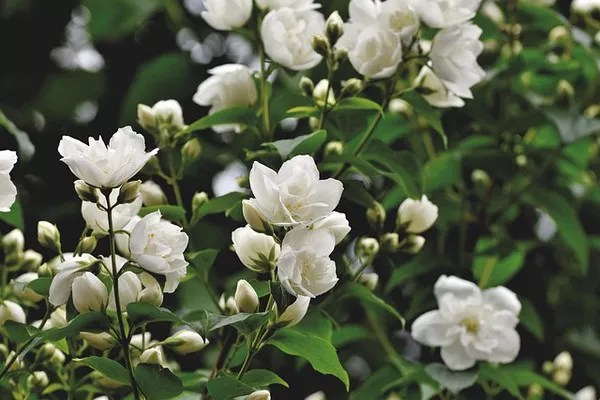In the tapestry of nature, the blooming of flowers stands out as a breathtaking masterpiece. The process of how flowers grow is a captivating journey that involves a delicate interplay of biological processes, environmental factors, and intricate cellular mechanisms. This article explores the fascinating journey from seed to bloom, shedding light on the science behind the growth of these colorful and fragrant wonders.
The Seed: A Tiny Marvel
The journey of a flower begins with the humble seed, a tiny marvel that encapsulates the potential for life. Seeds come in various shapes and sizes, each equipped with a unique set of genetic instructions encoded within its protective coat. The outer layer shields the embryonic plant from environmental factors, ensuring its survival until conditions are optimal for germination.
Germination: A Sprout’s Awakening
Under the right conditions of moisture, temperature, and light, the seed undergoes germination, a process that marks the awakening of the dormant embryo. Water acts as the key catalyst, triggering enzymatic activities within the seed. As the seed absorbs water, it swells and softens, breaking through its protective coat.
The emerging radicle, the embryonic root, anchors the seedling in the soil, while the plumule, the embryonic shoot, reaches towards the light. The cotyledons, the first leaves of the seedling, provide essential nutrients until the plant can photosynthesize on its own. Germination is a crucial phase, setting the foundation for the plant’s future growth and development.
Root Growth: Anchoring and Nutrient Absorption
Roots play a pivotal role in the life of a flowering plant, serving as both an anchor and a nutrient-absorbing system. As the plant continues to grow, the root system expands and branches out, anchoring the plant securely in the soil. This stability is vital for the plant’s ability to withstand environmental challenges such as wind and rain.
Simultaneously, the root hairs, tiny extensions of the root, increase the surface area for nutrient absorption. Through a process known as osmosis, the plant absorbs water and essential minerals from the soil. The intricate network of roots and root hairs forms a symbiotic relationship with soil microorganisms, facilitating the exchange of nutrients that is crucial for the plant’s growth.
Shoot Growth: Towards the Sun
As the roots establish the plant in the soil, the shoot system reaches for the sky. The stem, composed of nodes and internodes, supports the leaves, flowers, and buds. The growth of the stem is directed by the apical meristem, a region of rapidly dividing cells located at the tip of the shoot. These dividing cells give rise to new tissues, allowing the plant to elongate and develop.
Leaves: Nature’s Solar Panels
The leaves of a plant are its solar panels, harnessing the power of sunlight through the process of photosynthesis. This remarkable biological process converts light energy into chemical energy, providing the plant with the necessary sustenance for growth. Chloroplasts within the leaf cells contain chlorophyll, the pigment responsible for capturing sunlight and initiating photosynthesis.
Water absorbed by the roots travels through the plant’s vascular system to reach the leaves. This water, along with carbon dioxide absorbed from the air, combines with sunlight to produce glucose and oxygen. The glucose serves as a source of energy for the plant, supporting various metabolic processes and contributing to the formation of flowers.
Flower Bud Formation: Nature’s Artistry
The transition from vegetative growth to reproductive growth marks the formation of flower buds. This process is intricately regulated by environmental cues such as day length, temperature, and hormonal signals within the plant. The apical meristem, once dedicated to stem growth, now redirects its energy towards the development of flowers.
Within the flower buds, floral organs such as sepals, petals, stamens, and carpels undergo differentiation. Sepals protect the developing bud, while petals attract pollinators with their vibrant colors and enticing fragrances. Stamens, the male reproductive organs, produce pollen, while carpels, the female reproductive organs, house the ovules.
Pollination: Nature’s Matchmaking
The transfer of pollen from the stamen to the stigma, a process known as pollination, is a crucial step in the reproductive cycle of flowering plants. This can occur through various mechanisms, including wind, insects, birds, or other animals. The compatibility between the pollen and the stigma is essential for successful fertilization.
Fertilization and Seed Development: The Circle of Life
Once the pollen reaches the stigma, it travels down the style to the ovary, where fertilization takes place. This union of male and female gametes forms a zygote, the first cell of the new generation. The fertilized ovule develops into a seed within the ovary, triggering the formation of the fruit that surrounds and protects it.
The mature seed carries the genetic information needed for the next generation of plants. Through various dispersal mechanisms, such as wind, water, or animals, seeds find new locations to germinate, perpetuating the life cycle of flowering plants.
Conclusion
The journey of how flowers grow is a mesmerizing symphony of biological processes and environmental interactions. From the emergence of a tiny seed to the burst of color in a blooming flower, nature orchestrates a delicate dance that sustains life and perpetuates the cycle of growth. Understanding this intricate process not only deepens our appreciation for the beauty of flowers but also highlights the interconnectedness of all living organisms in the intricate web of life.


